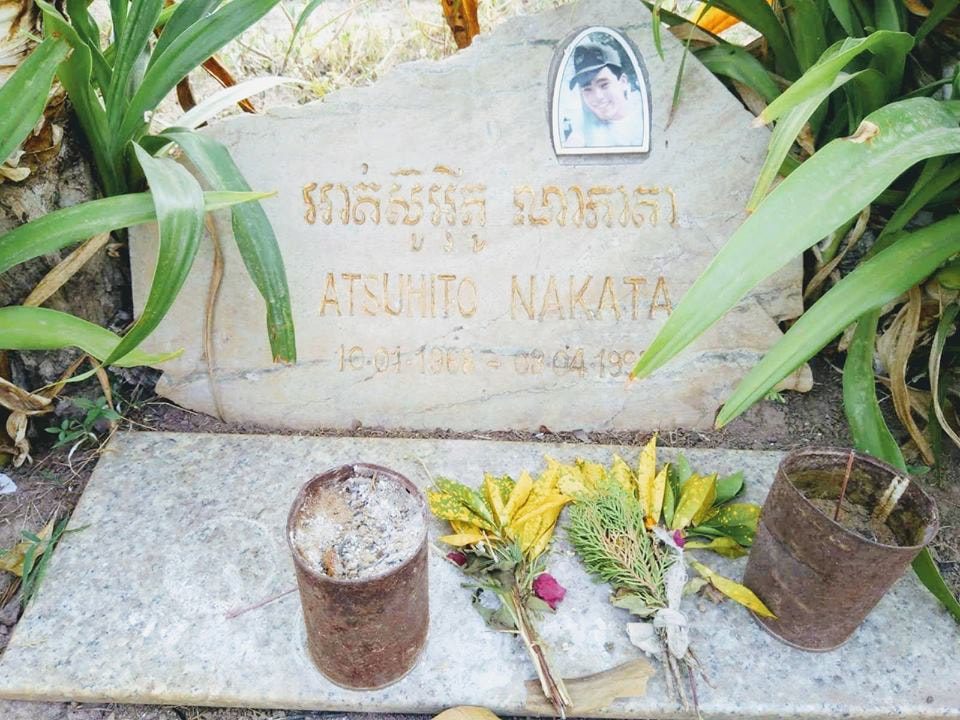On April 2, 1967, villagers in the Samlaut area of Battambang murdered two soldiers. Then, around two hundred local inhabitants bearing anti-government banners and armed with knives and homemade weapons attacked a JSRK (Jeunesse Socialiste Royale Khmère – Royal Khmer Socialist Youth) camp at Stung Kranhung near Samlaut. The camp was burnt, and army posts stormed, with two soldiers killed. Two bridges were burnt, five more guards and village officials from Ta Sanh were ambushed, one official being killed. Several houses in the new agricultural settlements at Beng Khtum and Chamlang Kuoy were burnt. A platoon of paratroopers discovered a rebel hide out in Kompong Kou, killed one and captured 73 in all. In the meantime, “some two thousand men, women and children had fled or been herded into the forest”
On April 2, 1970: 486 imprisoned as political prisoners under Sihanouk were released, including Duch, later the head of S-21 (Tuol Sleng).
On April 2, 1974, leading Khmer Rouge official Khieu Samphan met with Chinese leader Mao Zedong.

On April 2, 1976, Prince Sihanouk resigned as head-of-state for Democratic Kampuchea (Khmer Rouge). He remained under house arrest until late 1978.
On April 3, 1956, Khim Tit formed a government as prime minister.

On April 3, 1960, King Norodom Suramarit died, and a Council of Regency was established with Prince Sisovath Monireth as chairman on April 6, 1960.

On April 3, 1975, as Khmer Rouge forces closed in for the final assault on the capital city, U.S. forces were put on alert for the impending embassy evacuation. An 11-man Marine element flew into the city to prepare for the arrival of the U.S. evacuation helicopters.
On April 4, 1967, The National Assembly approved emergency powers for Prince Sihanouk. Government troops (under command of Lon Nol) then began to suppress the insurgency in the Samlaut District, Battambang province, resulting in the deaths of around 10,000 individuals.
From 3–4 April, 1975, all FANK positions on Route 1 above Neak Luong held by the FANK 1st Division fell one after the other; any reinforcement, whether by road or via the Mekong, was impossible.
On April 5, 1970, The main avenues in Phnom Penh were decorated with propaganda stating, “The Vietcong is worse than cholera,” while tracts in Khmer and French with similar messages were distributed. The radio participated in the anti-communist Vietnamese campaign.
The propaganda budget for the Ministry of Information, headed by Trinh Hoanh was increased to propagate in the anti-Vietnamese sentiment among the population.
On April 6, 1989, it was announced that Vietnamese troops would all be withdrawn from Cambodia by the end of the year. From Beijing, Prince Sihanouk insisted that the Vietnamese troop withdrawal be ”controlled” and supervised by the United Nations. He said China would stop its aid to the Cambodian opposition, whose fighting forces were made up largely of the Khmer Rouge, only if the United Nations verified the withdrawal. There was no official reaction from China.
On April 7, 1993, 20 political parties began campaigning for the UN sponsored election. The Khmer Rogue boycotted the process.

On April 8 1975, Prime Minister of the Khmer Republic , Long Boret, attempted to initiate ceasefire talks with the Khmer Rouge. He is ignored.

On April 8, 1976, a series of unexplained explosions were reported in Phnom Penh.
On April 8, 1993, Japanese election monitor Atsuhito Nakata, 25 years old, was killed by the Khmer Rouge in Srok Prasat Sambor, Kampong Thom province. To commemorate his heroism in the cause of peace in Cambodia, a village in Kampong Thom province has been named ′′ Atsu Village′′ until today.

